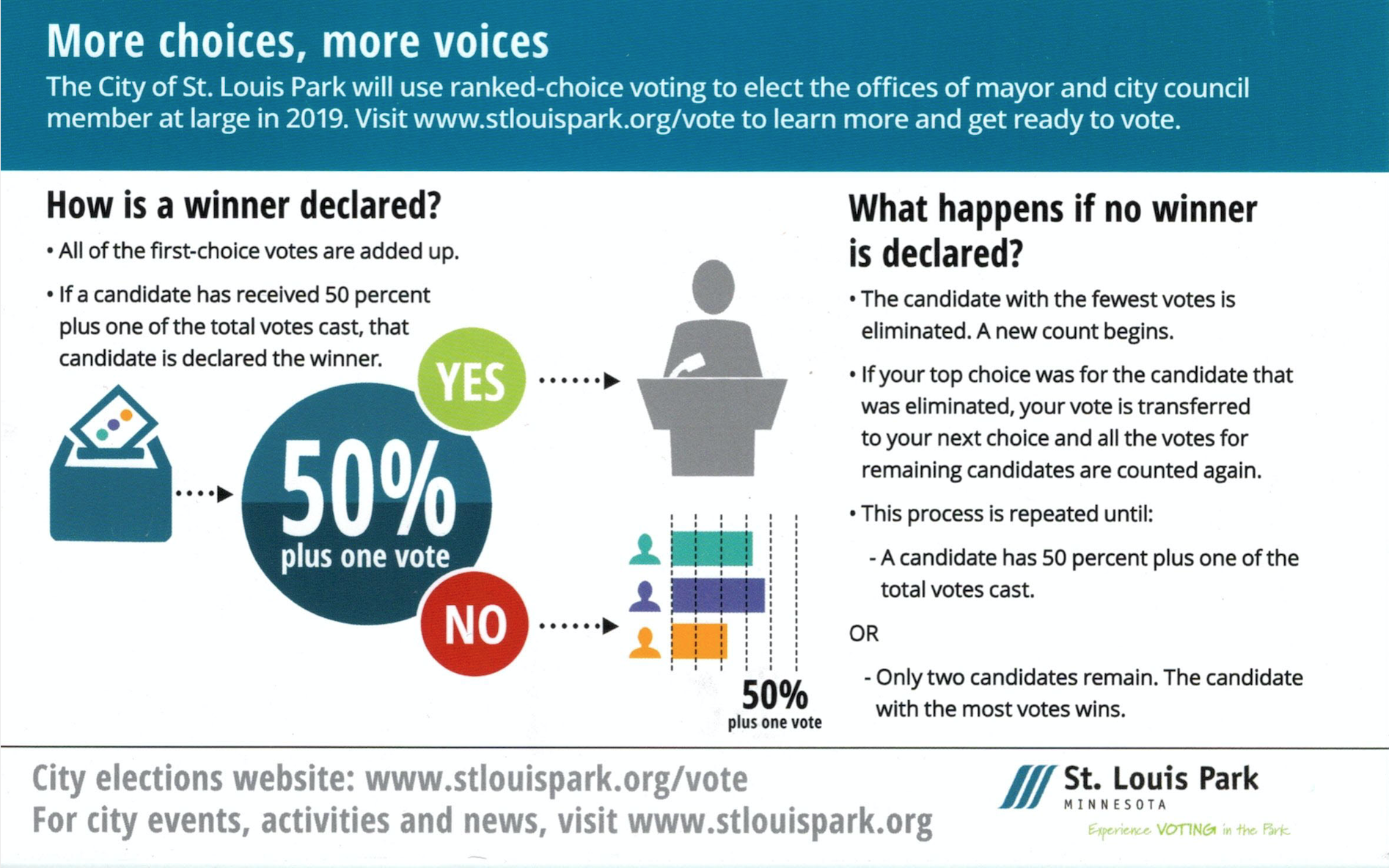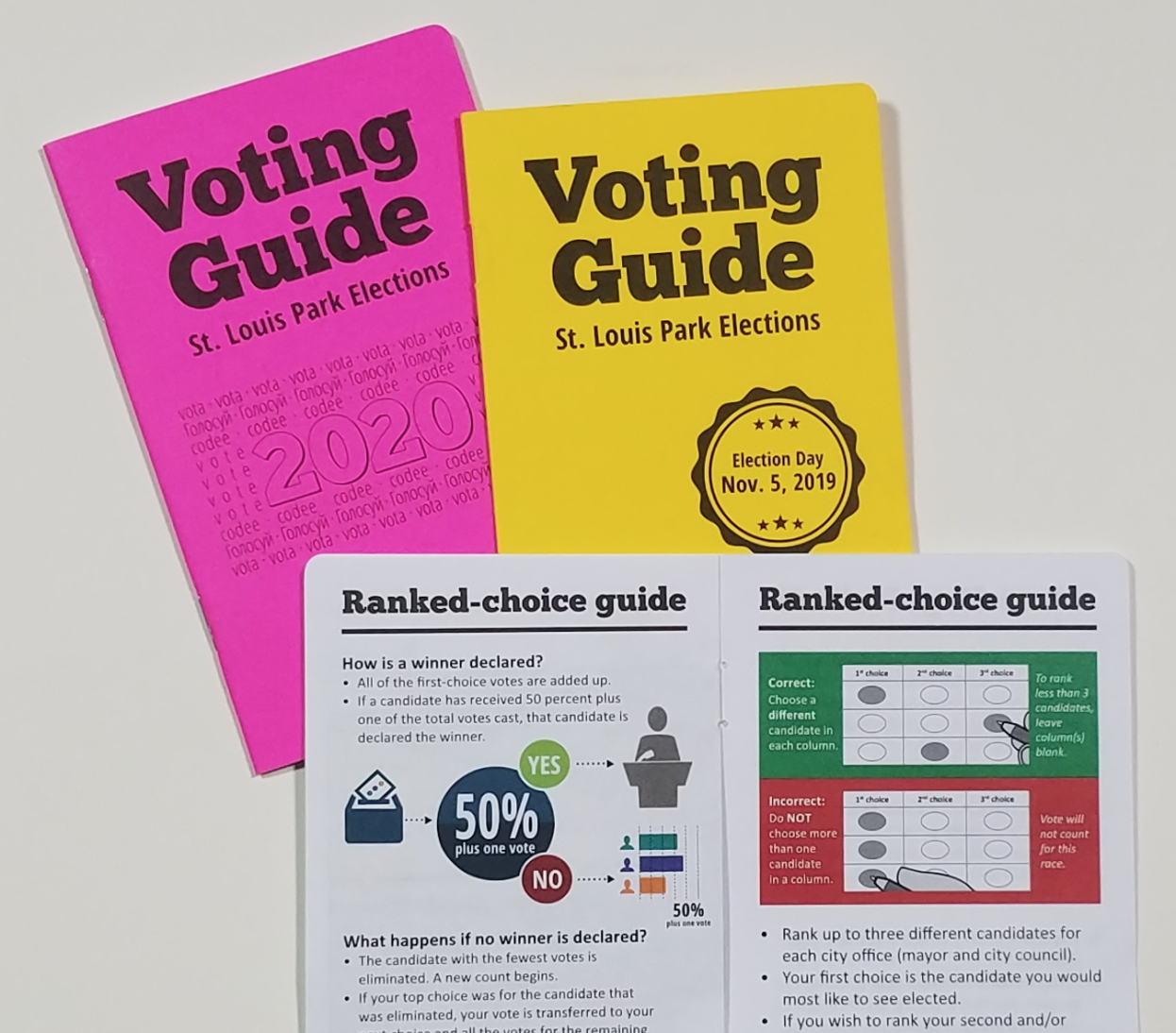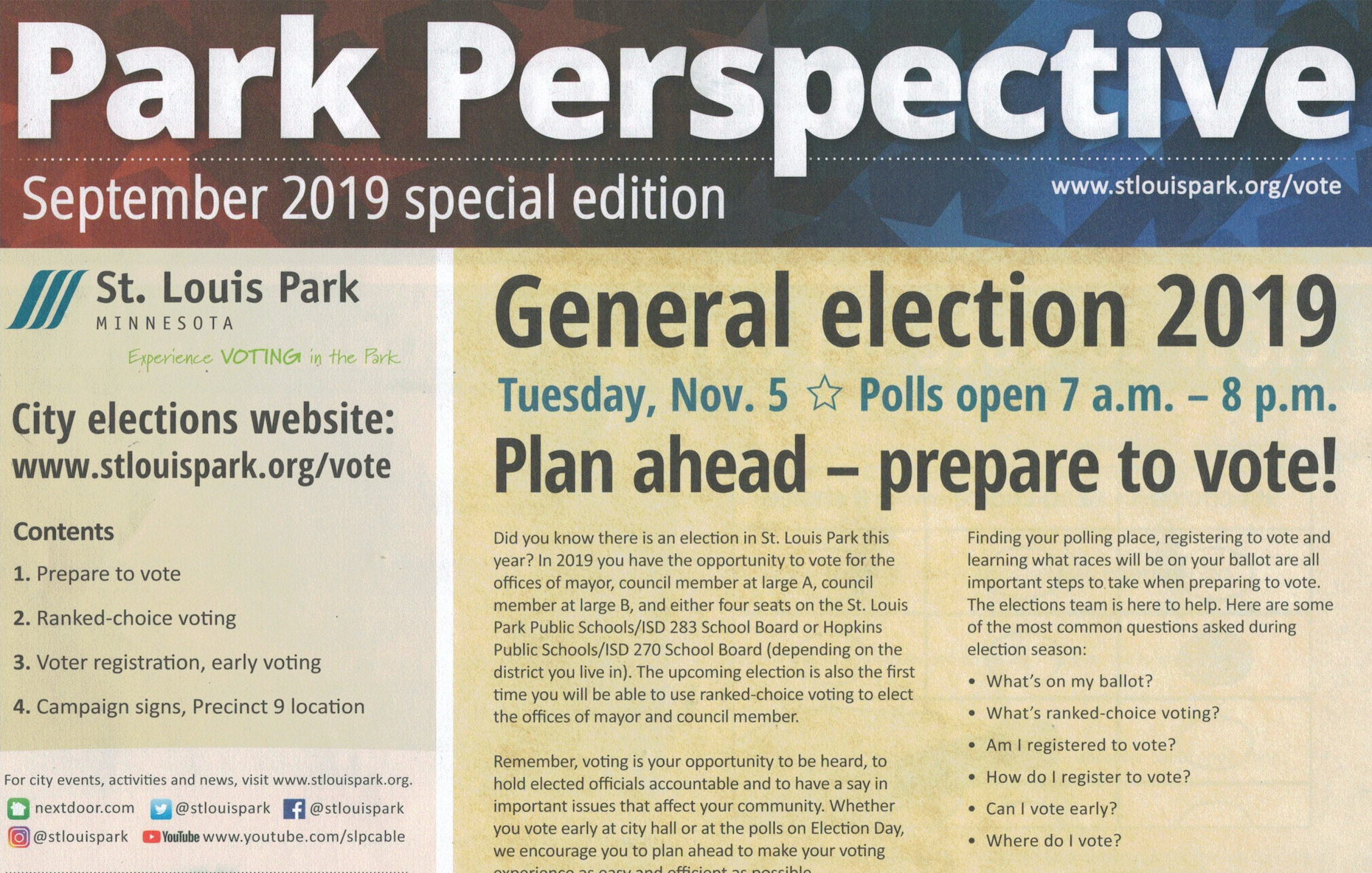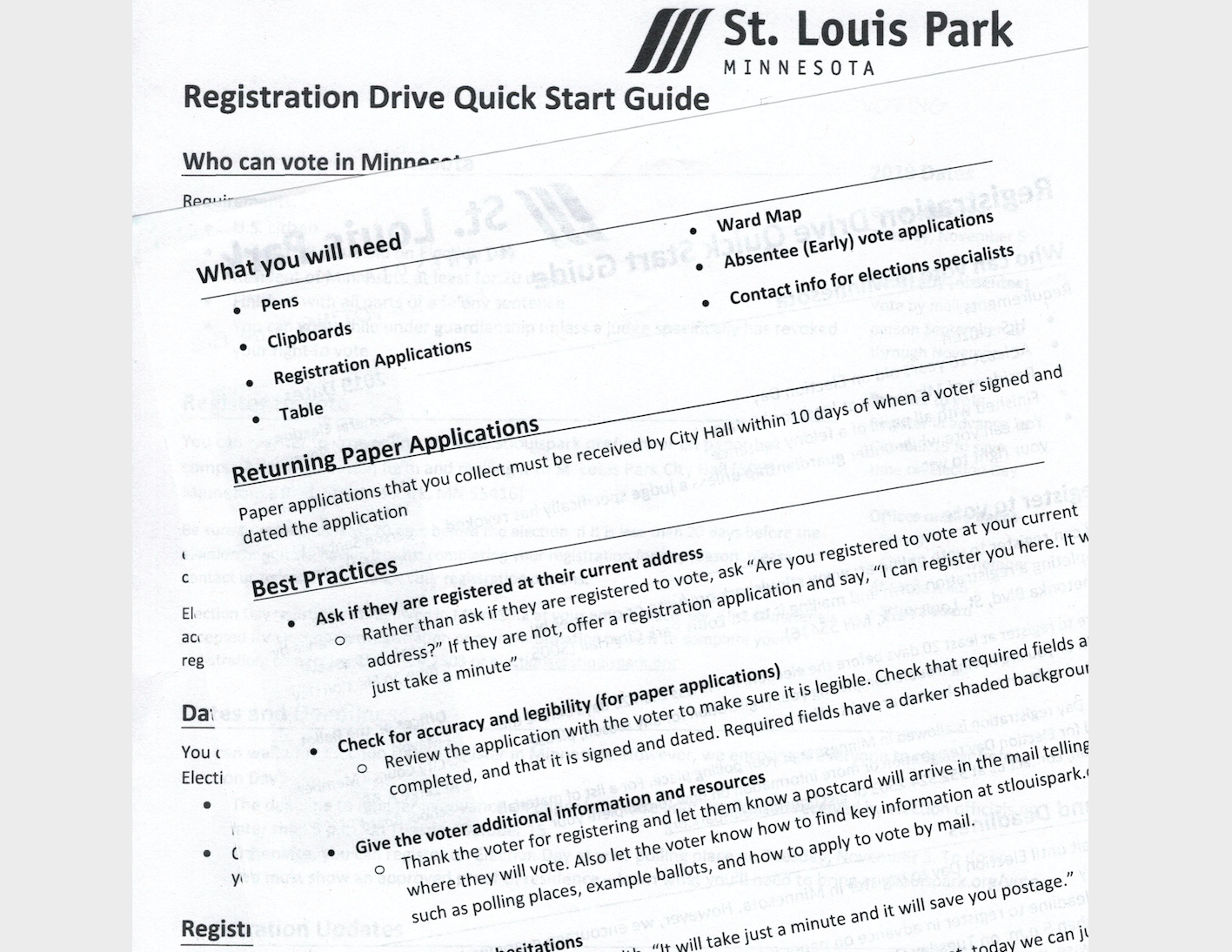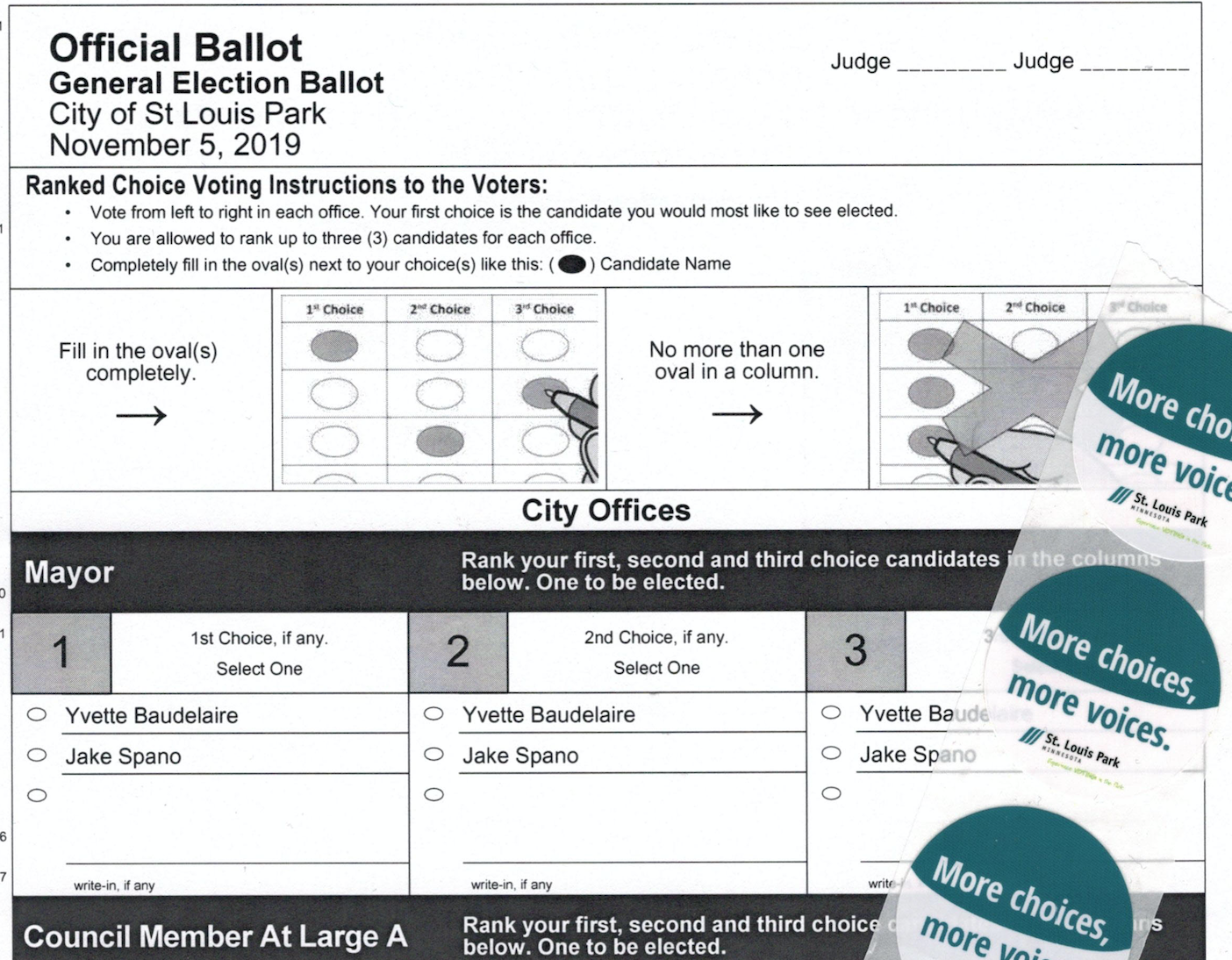Introducing ranked-choice voting in the City of St. Louis Park
When the City Council in St. Louis Park, Minnesota adopted ranked-choice voting (RCV) for their city elections, City Clerk Melissa Kennedy decided that they needed a full-court press to make sure voters were ready and the first election in November 2019 was a success. She and Michael Sund, in charge of voter education and outreach, decided that the community would see at least one new thing about ranked-choice voting every month.
They used pocket guidebooks, direct mailers, and posters, building to a big push at the end with detailed explainers in the two months before election day and information at polling places.
Their goal was that when people come into the polling place to vote, they had heard about RCV and it would not be a surprise. Whether someone was in favor of the new voting method or not, they would have the tools to know how to mark their ballot accurately and understand how it would be counted.
The City election team didn’t develop all these materials alone. They met monthly with a group of election judges (that’s Minnesotan for poll workers) who reviewed the materials and gave feedback. In the process, the judges learned a lot about ranked-choice voting, they anticipated and prepared for questions from voters, and improved the explanations. As Kennedy put it, “We didn’t want it to be all election-speak. It was important that all the materials spoke in ways people could understand.”
One of the big debates was how visual – and how much text – should be on the voter education materials. The final decision was to make each piece strongly visual, with just enough text to be sure the illustrations communicated clearly. The City communications team led by Jacque Smith worked on these materials, with visual elements by graphic design intern Emily Csuy.
The elections team also made getting the community involved a priority. They ran three mock elections and went to speak at any community event that invited them to give a presentation. Throughout, they took a neutral tone. They didn’t want to try to “sell” ranked-choice voting–just educate voters about how it works.
All this work took resources. The City Council supported the investment in the new voting method with funding for the printing and mailing costs and to develop two videos explaining ranked-choice voting. City Manager Tom Harmening, Deputy City Manager Nancy Deno, and former election specialist Robert Stokkawere leaders were also leaders in supporting this work.
In the end, the whole campaign came together. Voters, election judges, and city officials all saw that the Clerk’s office knew what they were doing and had done their training and outreach to make a smooth election day. They were especially glad to hear voters say, “You took something complicated and made it so I could understand it.”
But the proof of an election is in the results. In their first election, there were very few spoiled ballots, even compared to larger cities like Minneapolis that have run ranked-choice elections for several years.
“They were the cleanest ballots I’ve ever seen, with ovals filled in clearly. And I’ve been doing this since 2006. So the stuff we did must have worked.”
– St. Louis Park City Clerk, Melissa Kennedy
More reading
St. Louis Park ranked-choice voting page, including many of the materials in this showcase and the two videos produced by Captivate Media.
Ranked Choice Voting Resource Center – Usability Best Practices
Project: Design principles for ranked-choice voting
Field Guide No. 5 – Choosing how to communicate with voters
The University of Minnesota Certificate in Election Administration – Michael Sund was a student in our Election Design course in 2019, while working on the ranked-choice voting outreach campaign.


